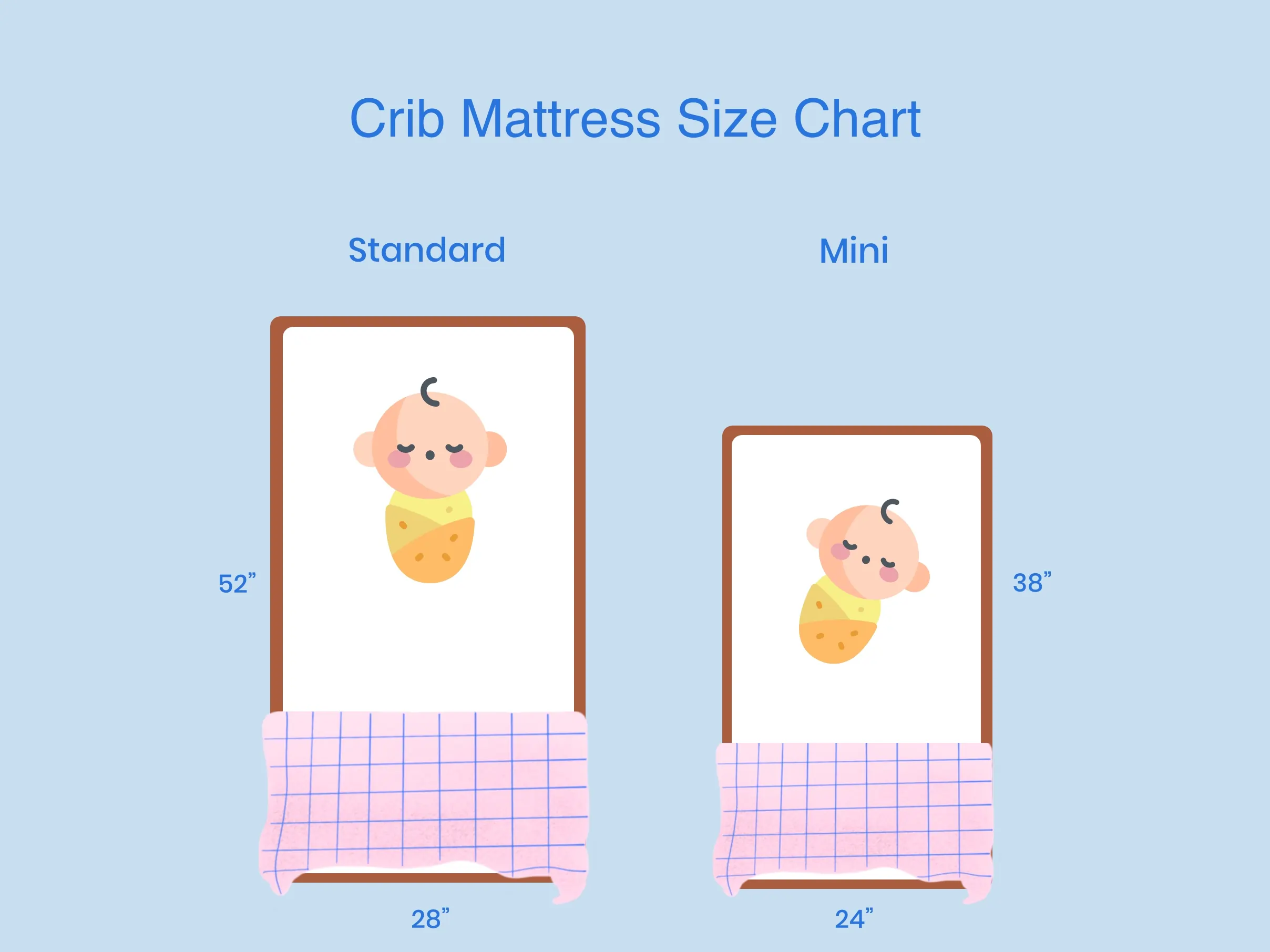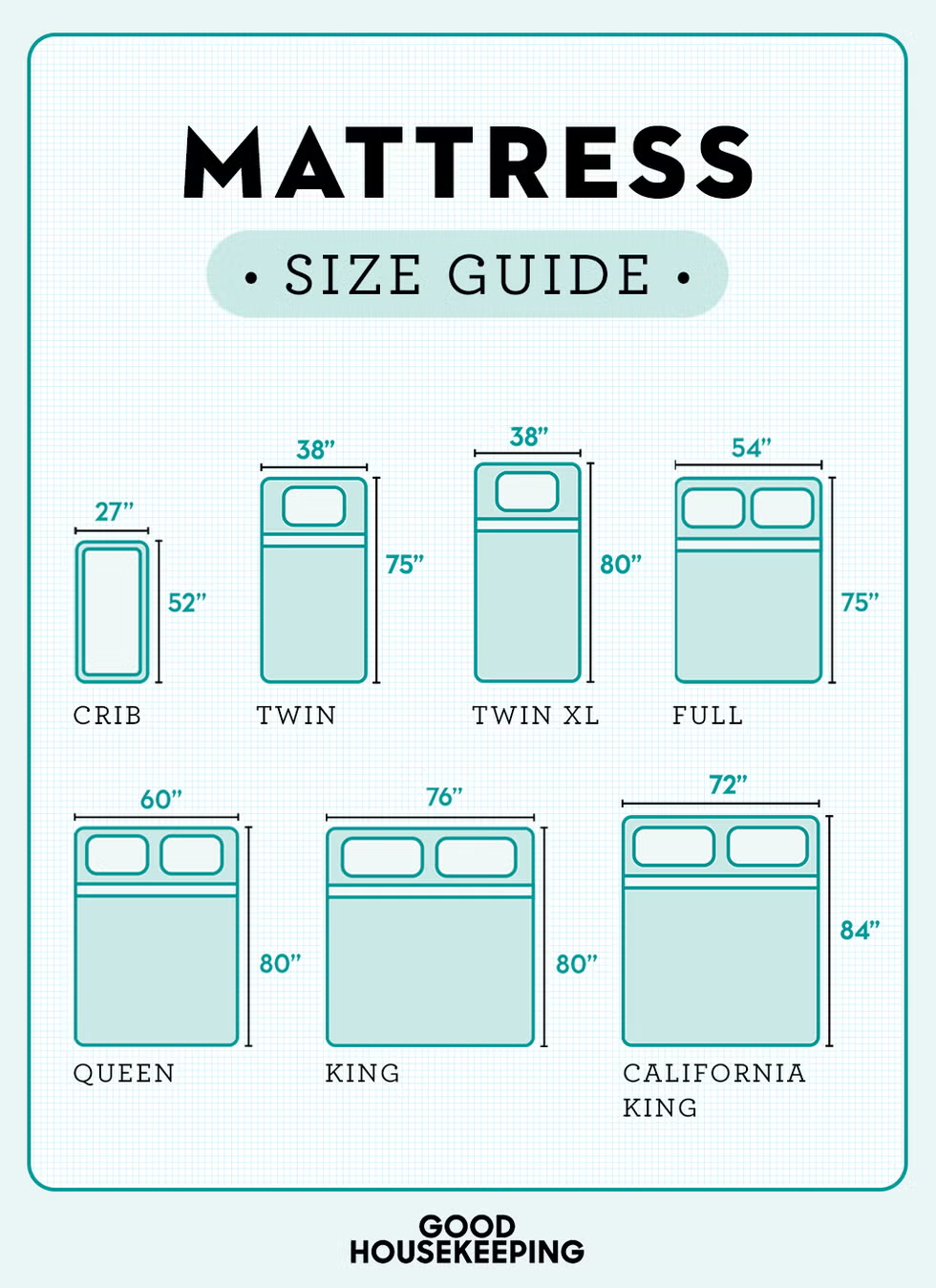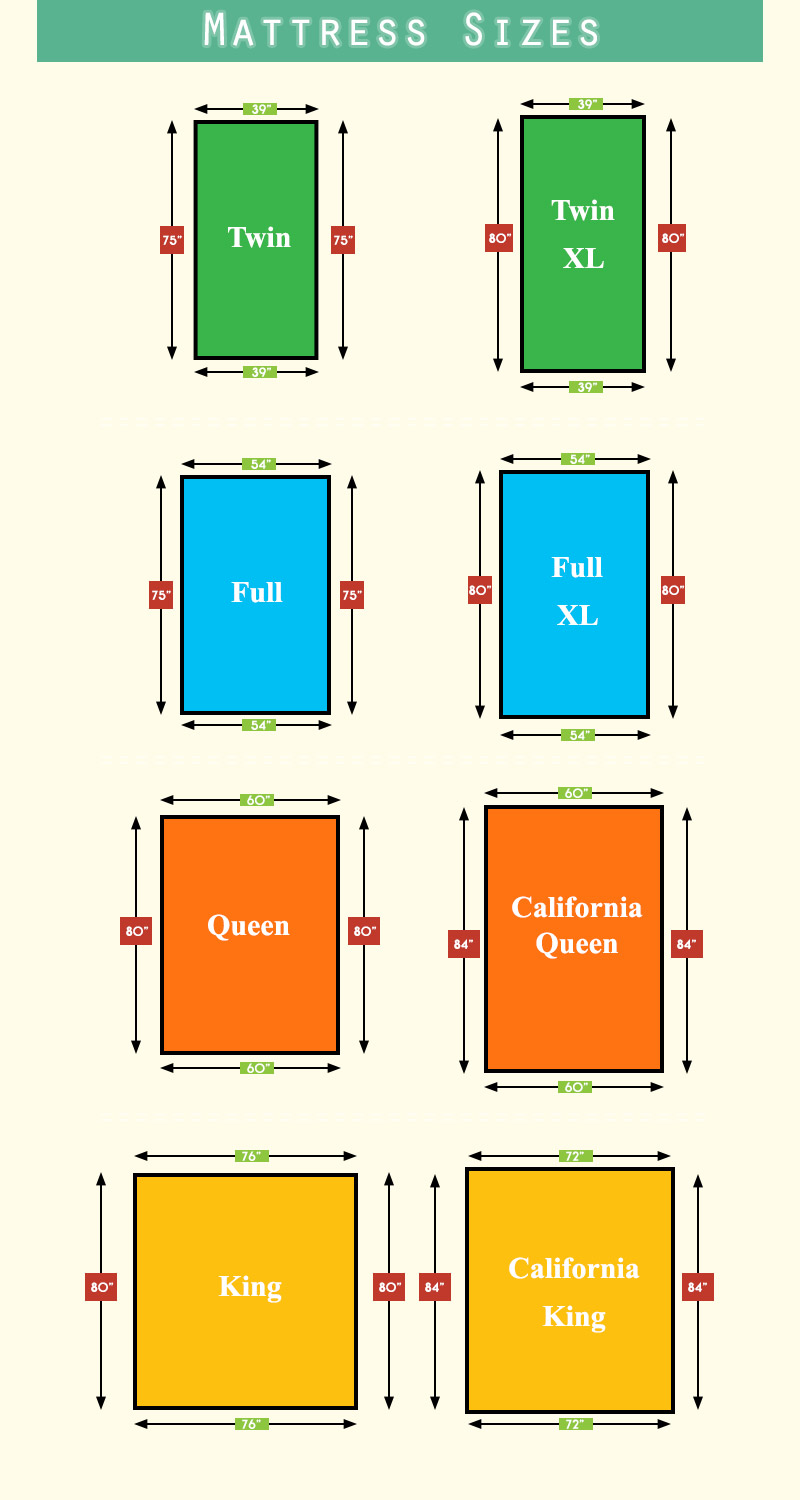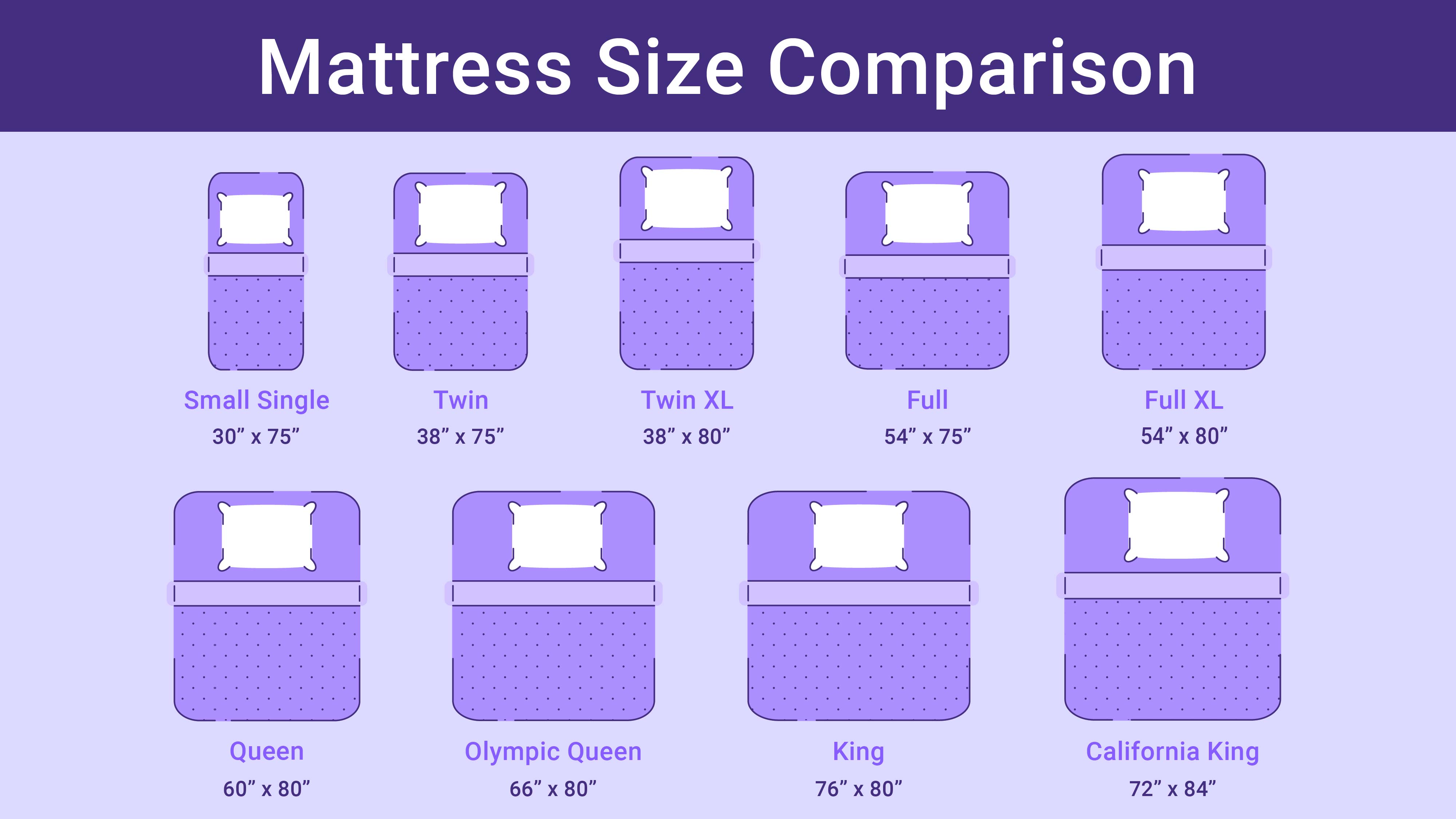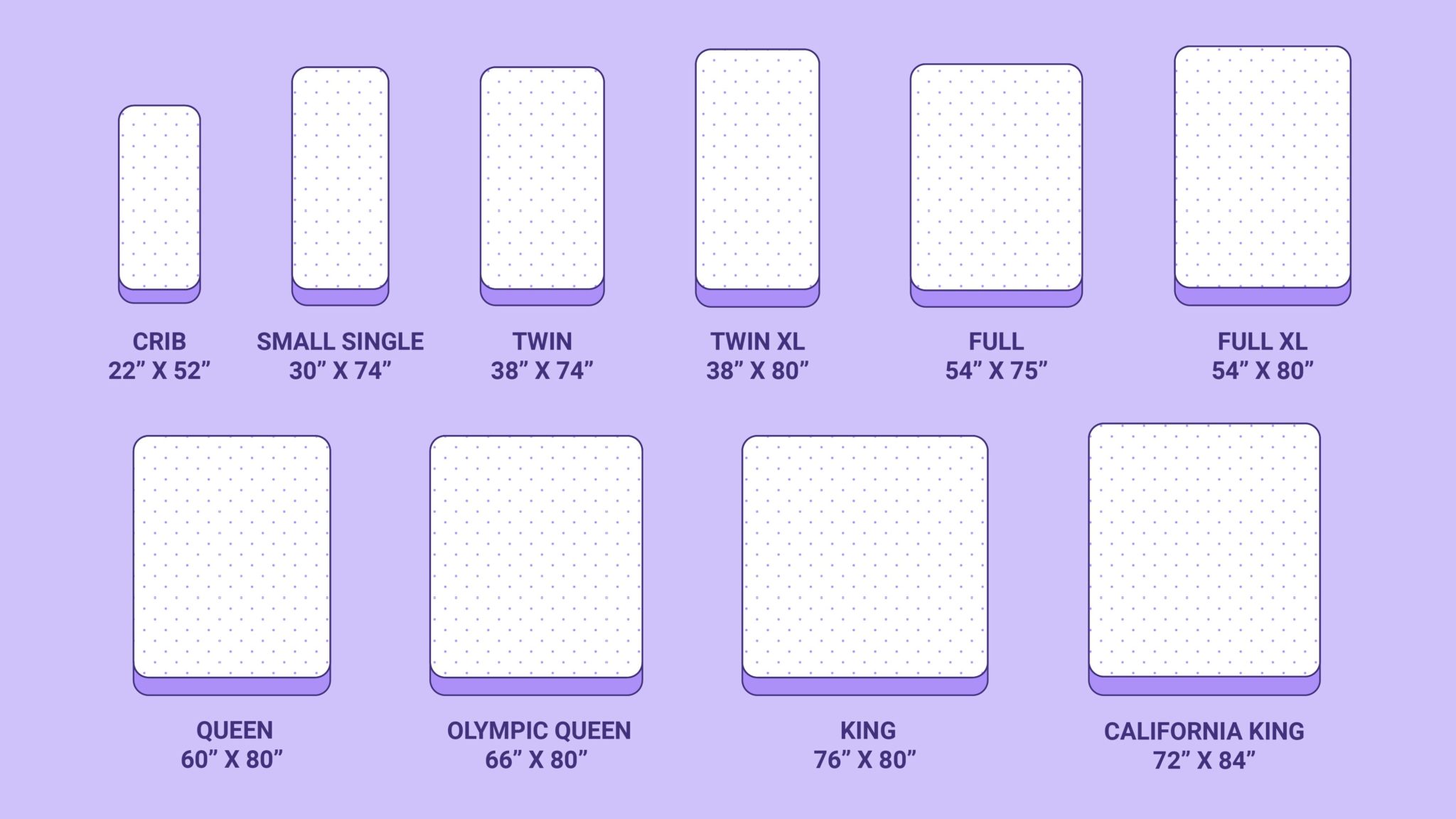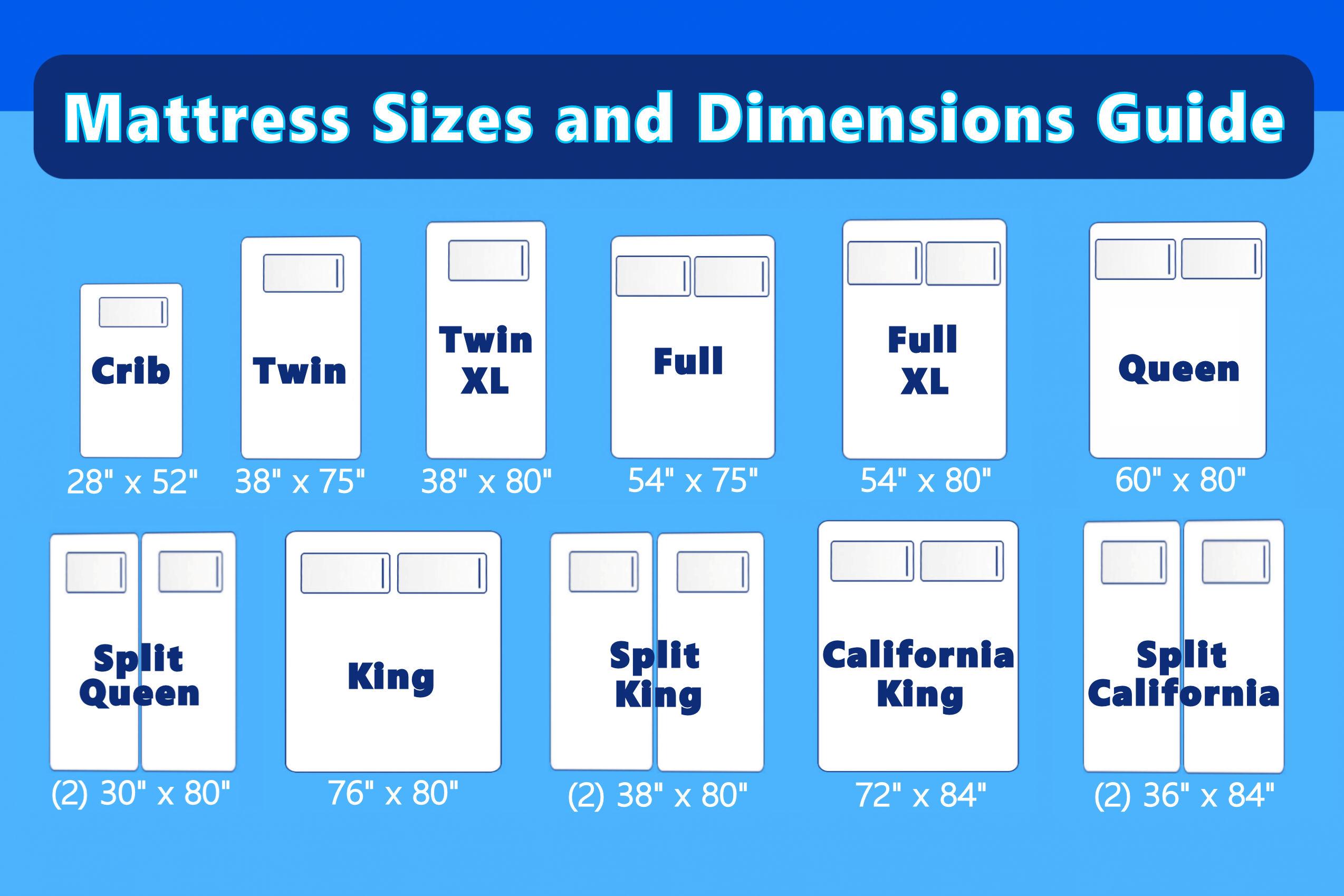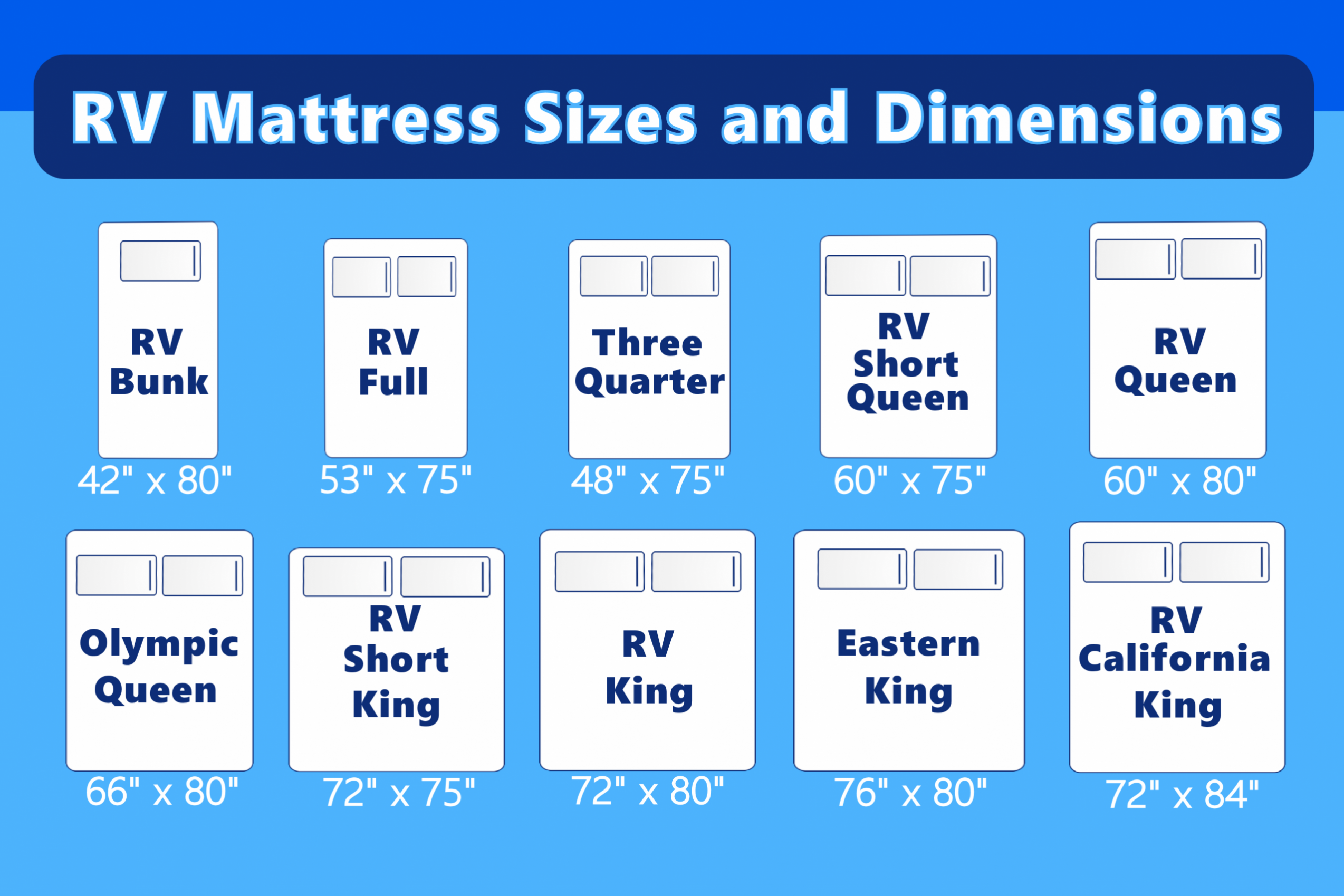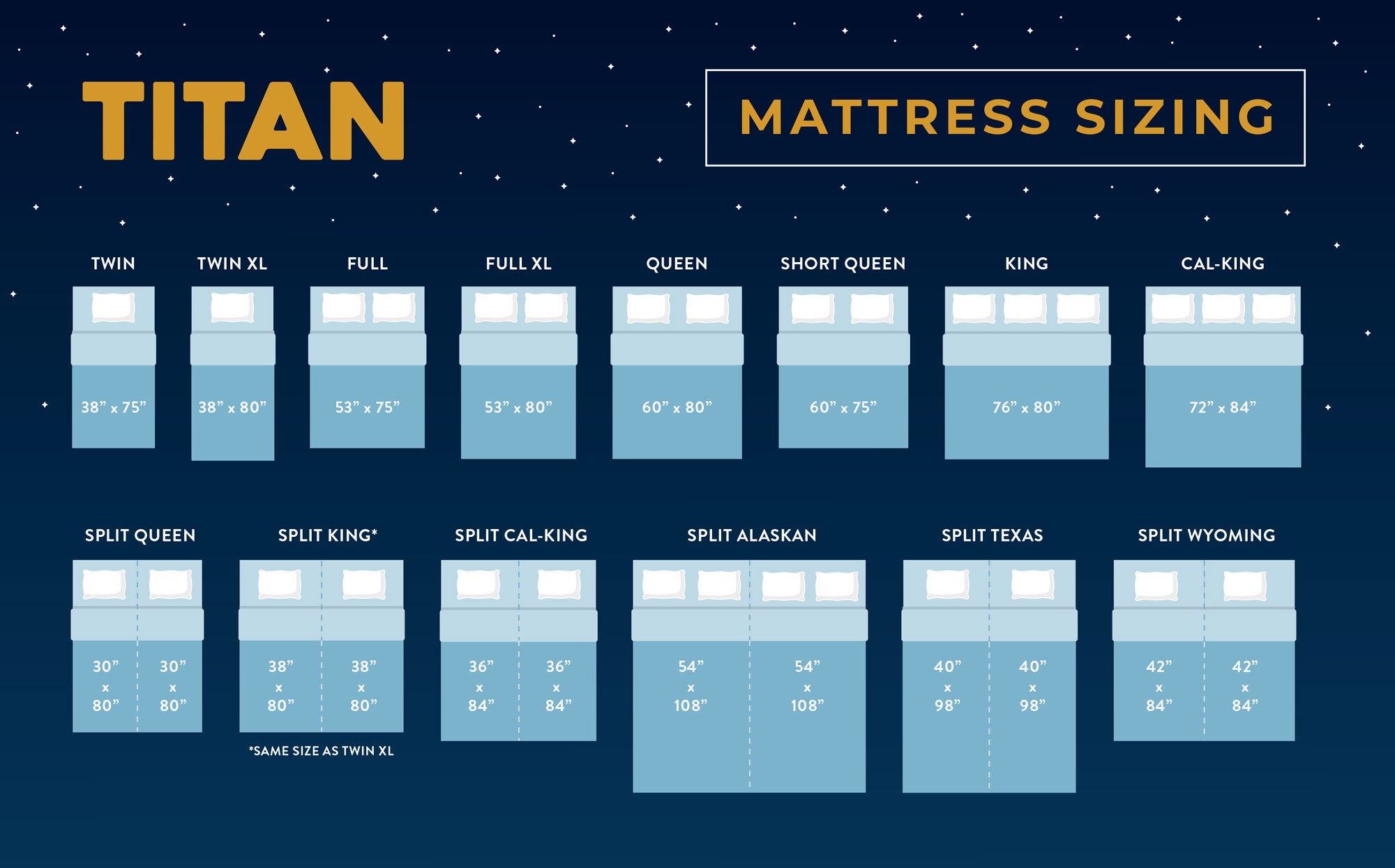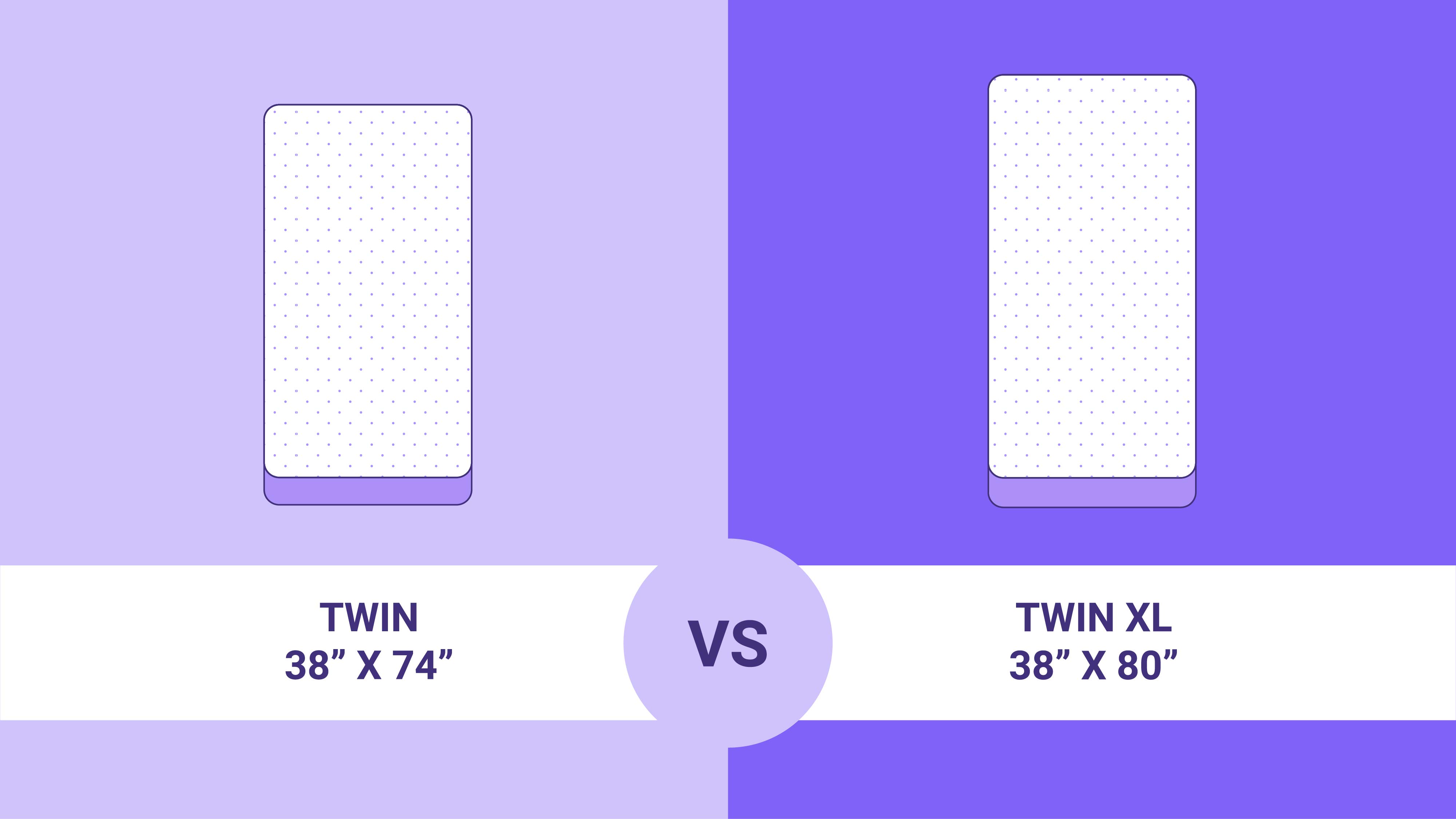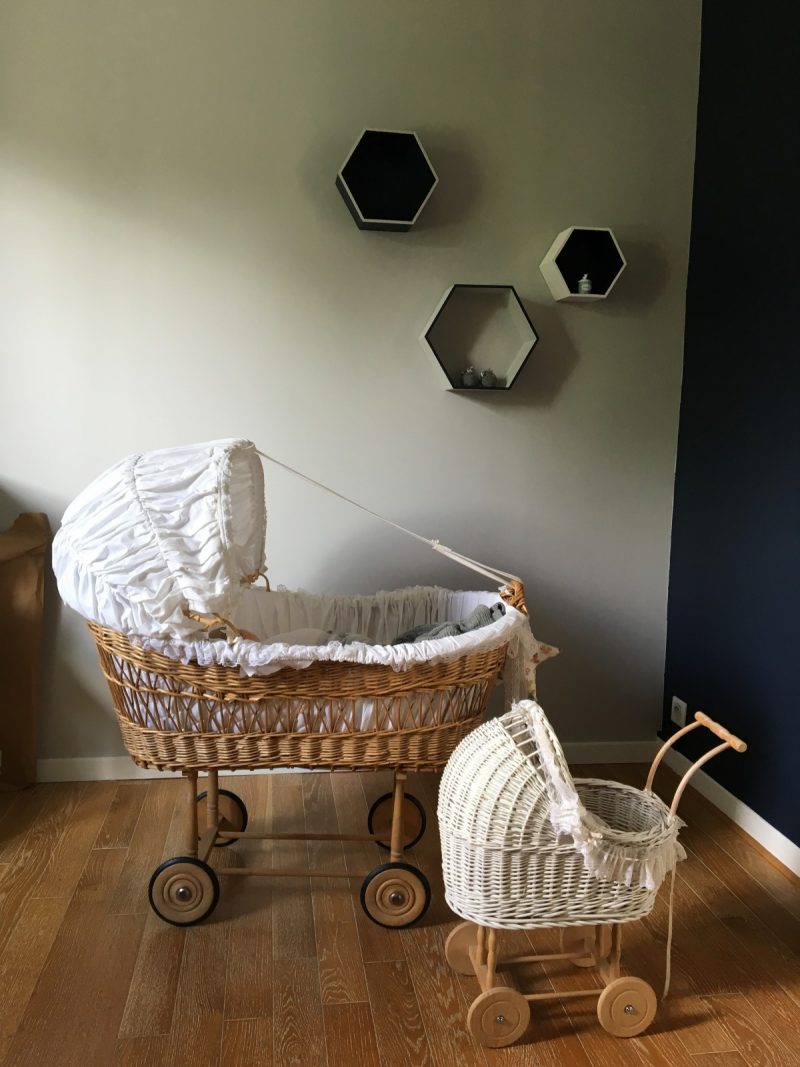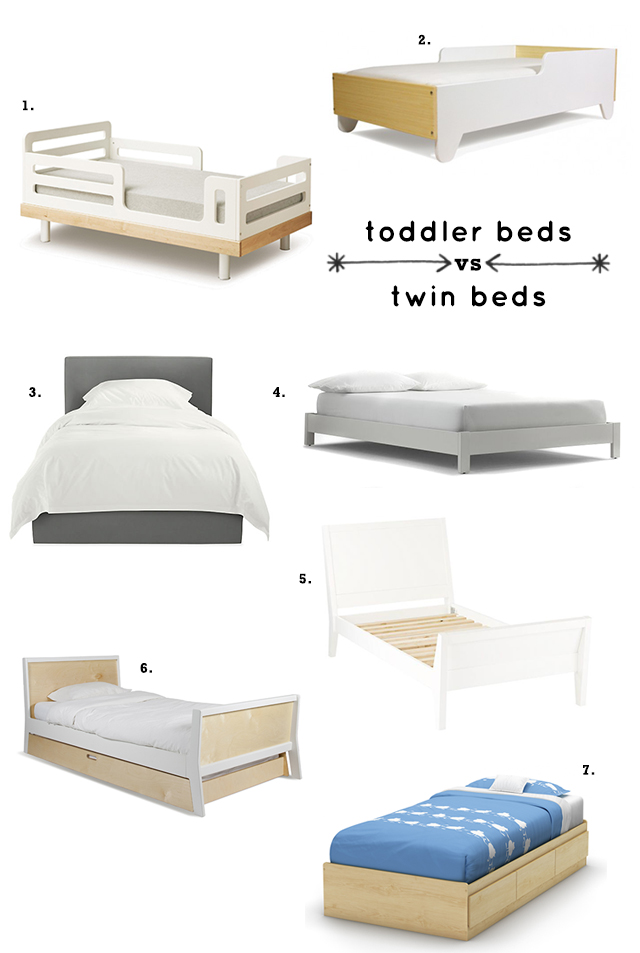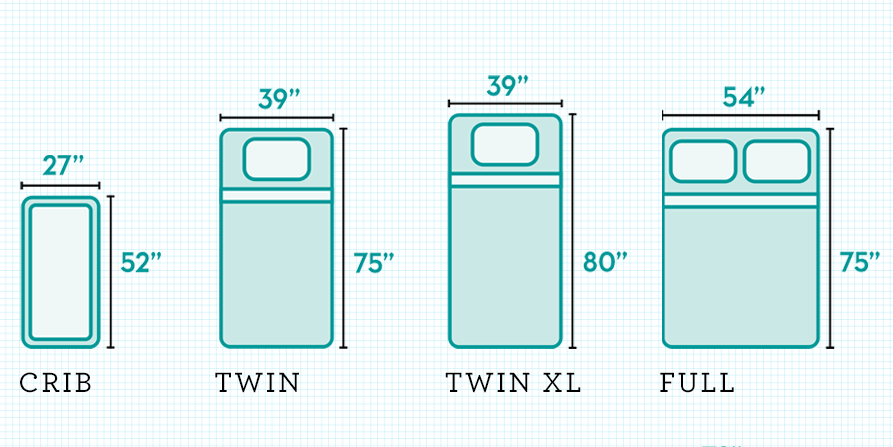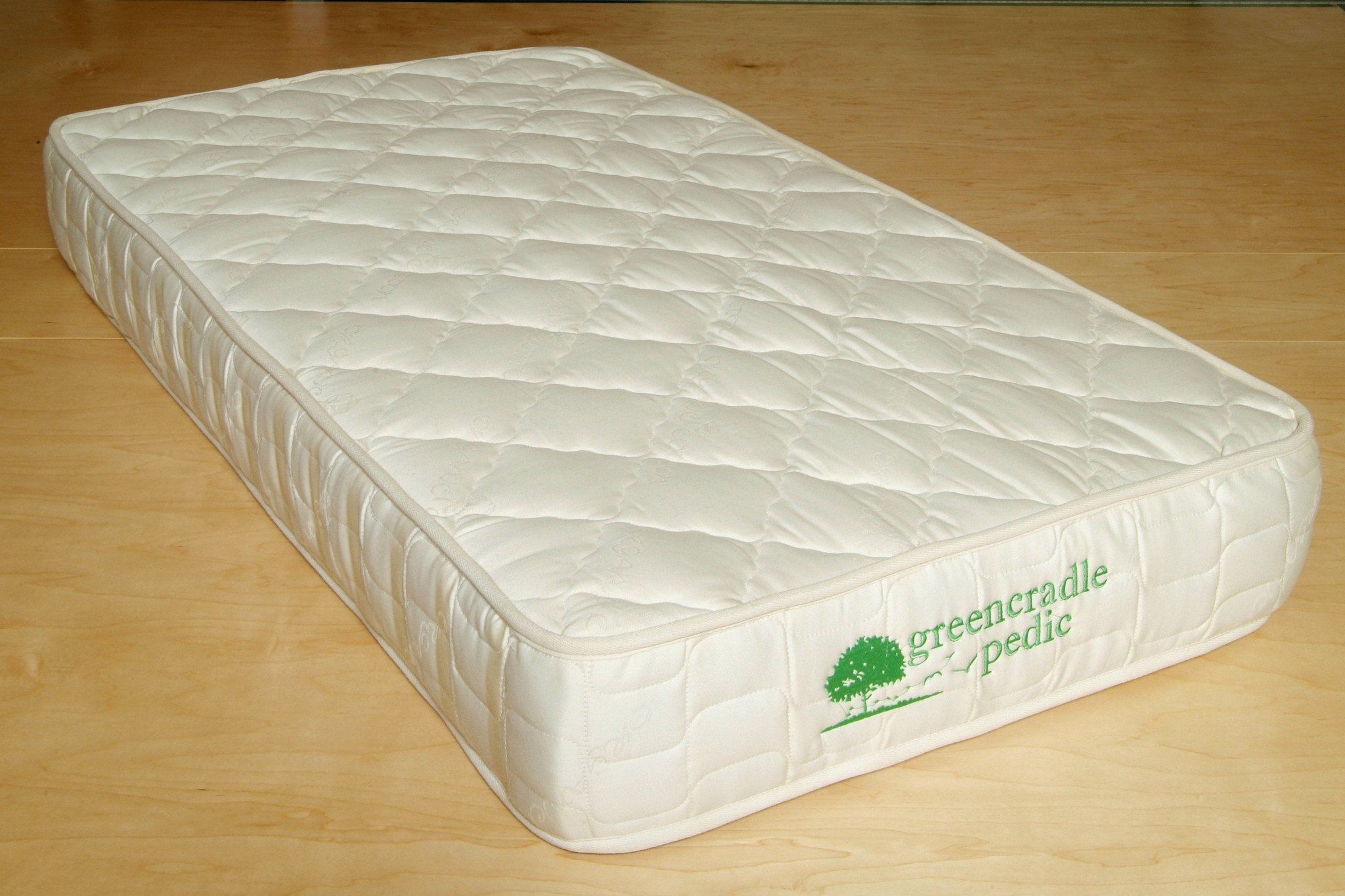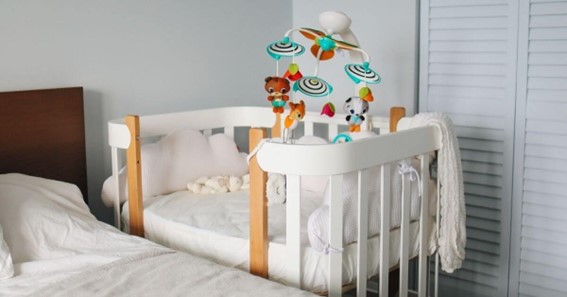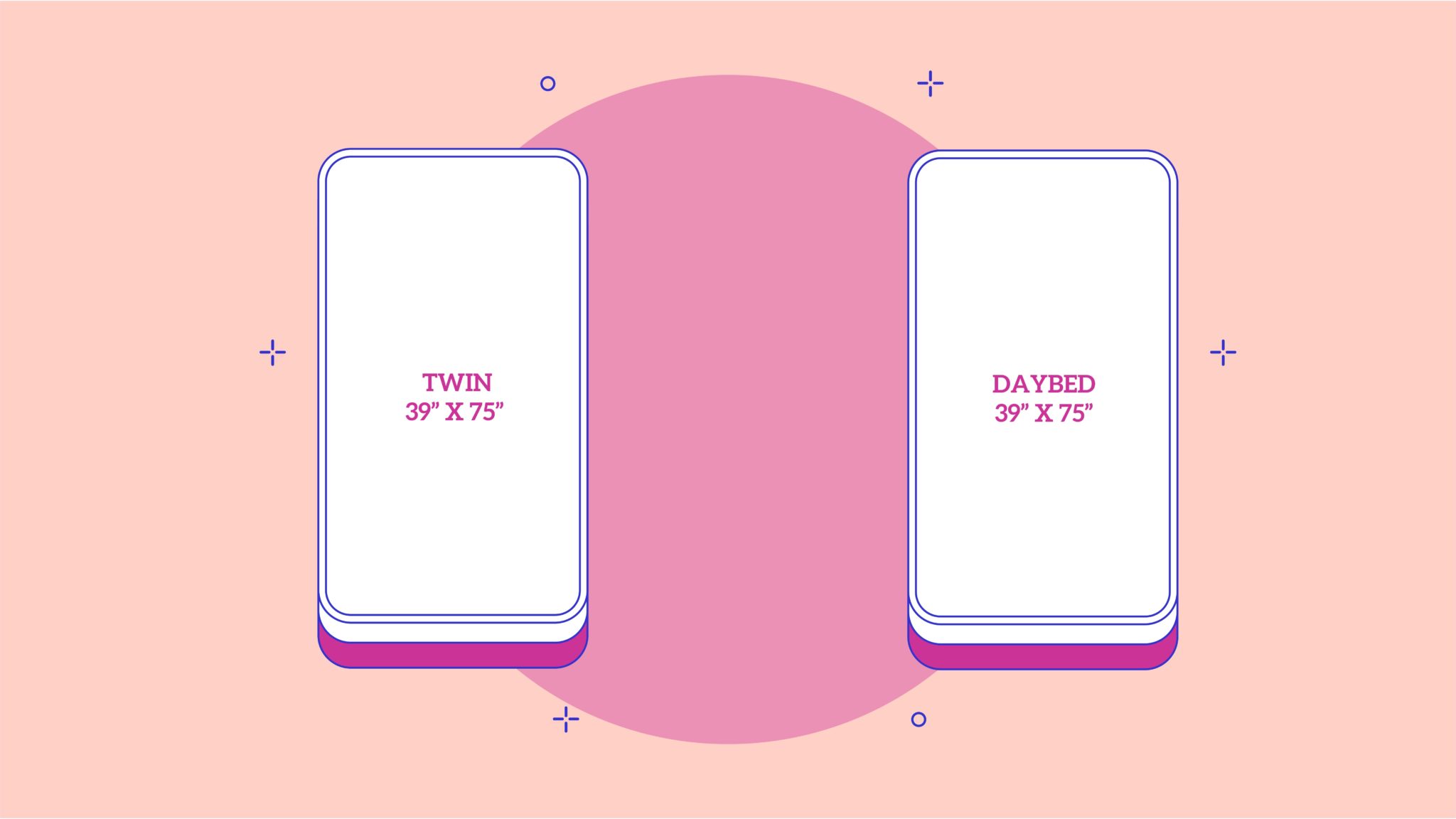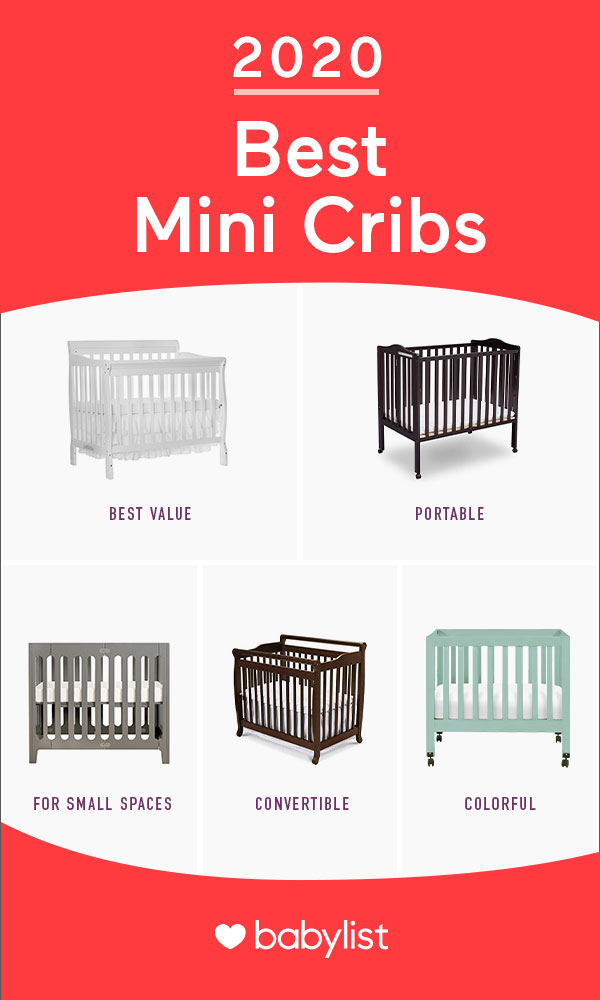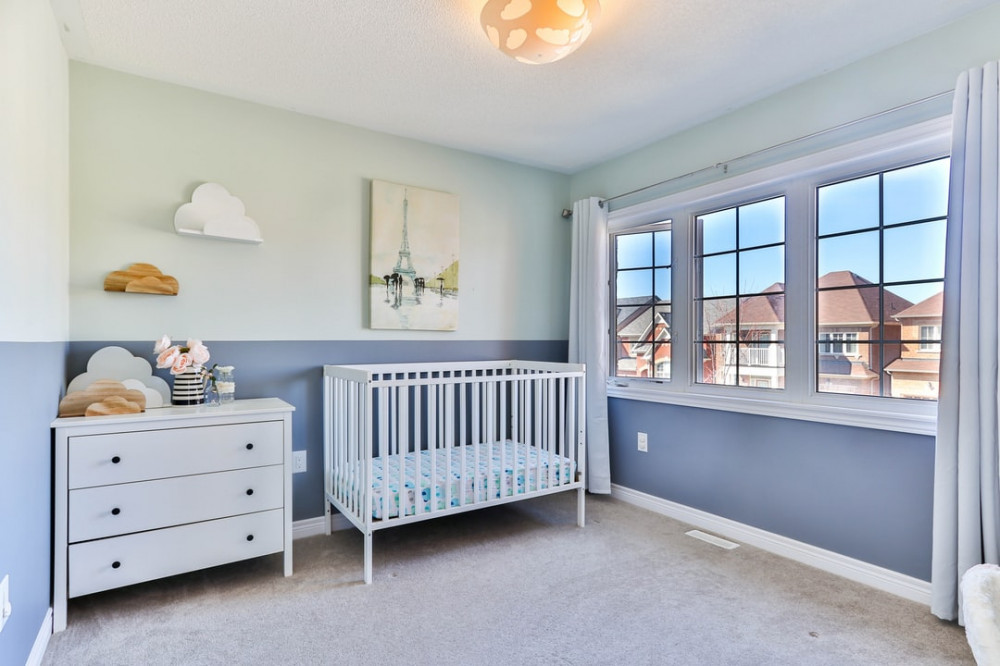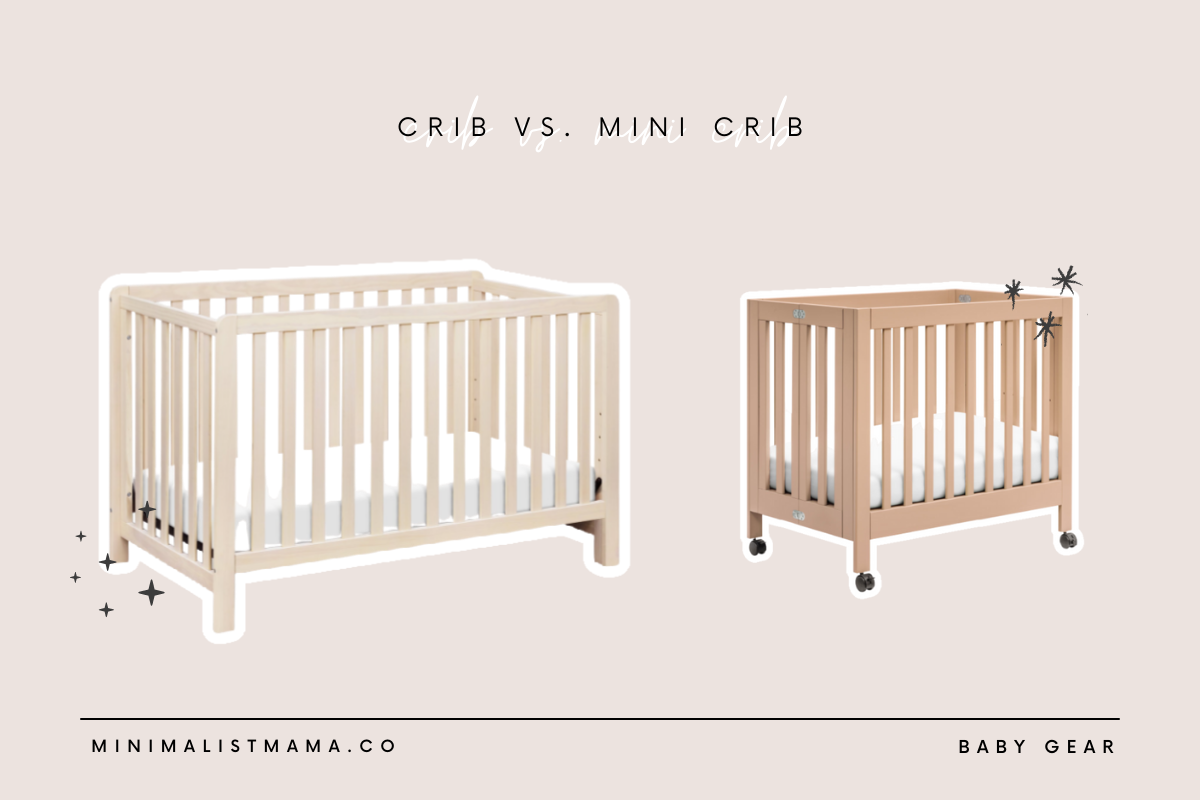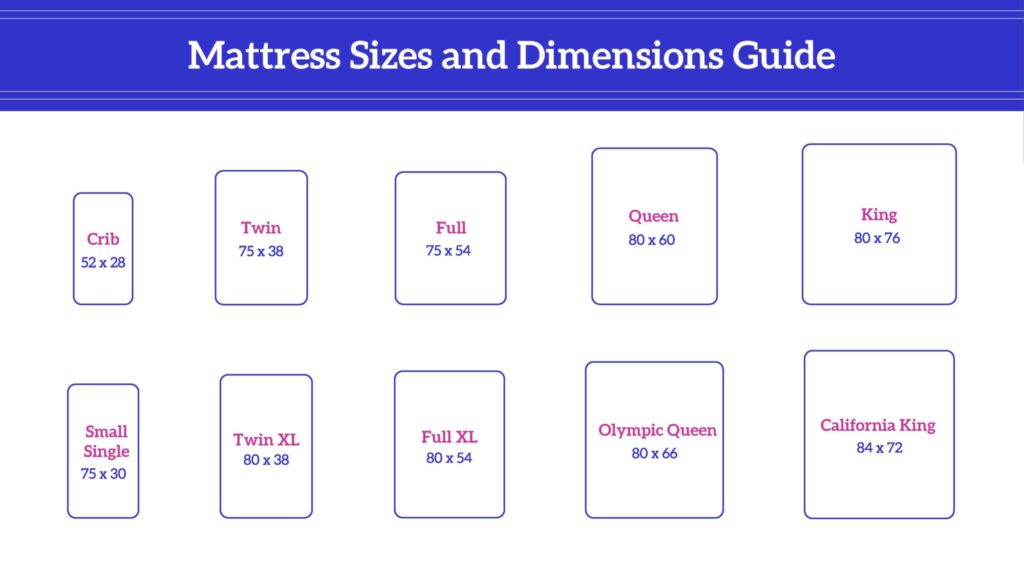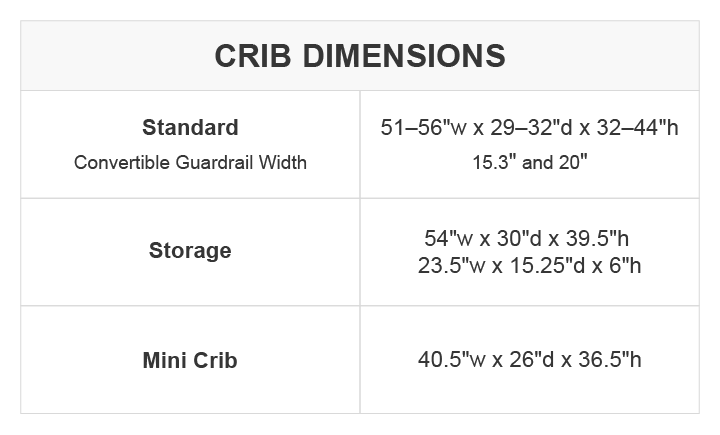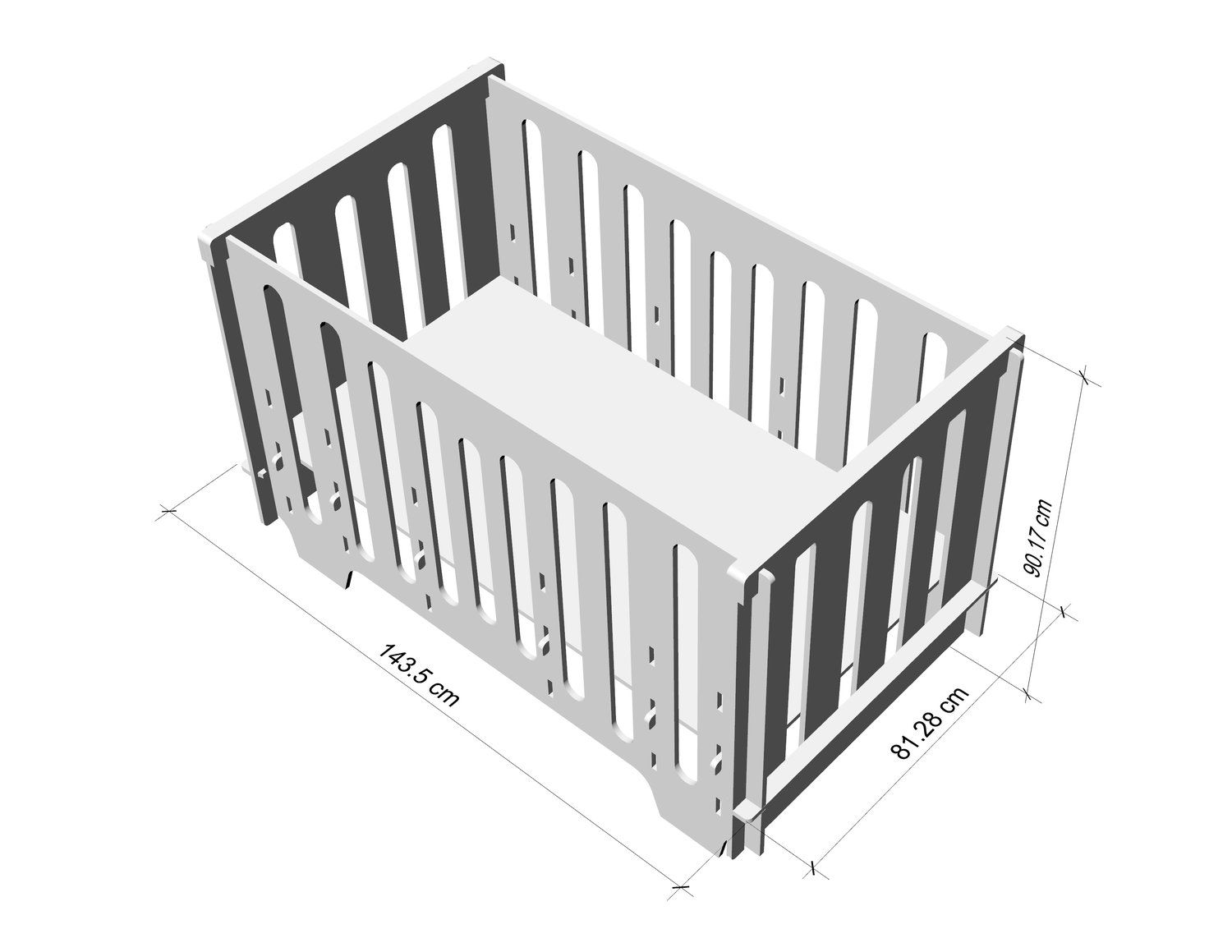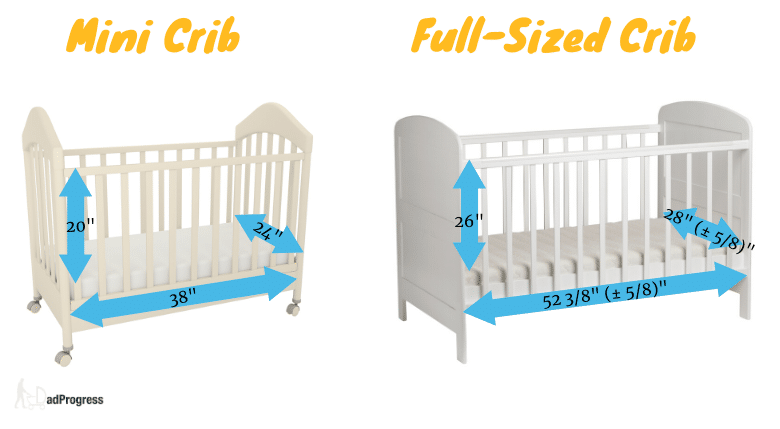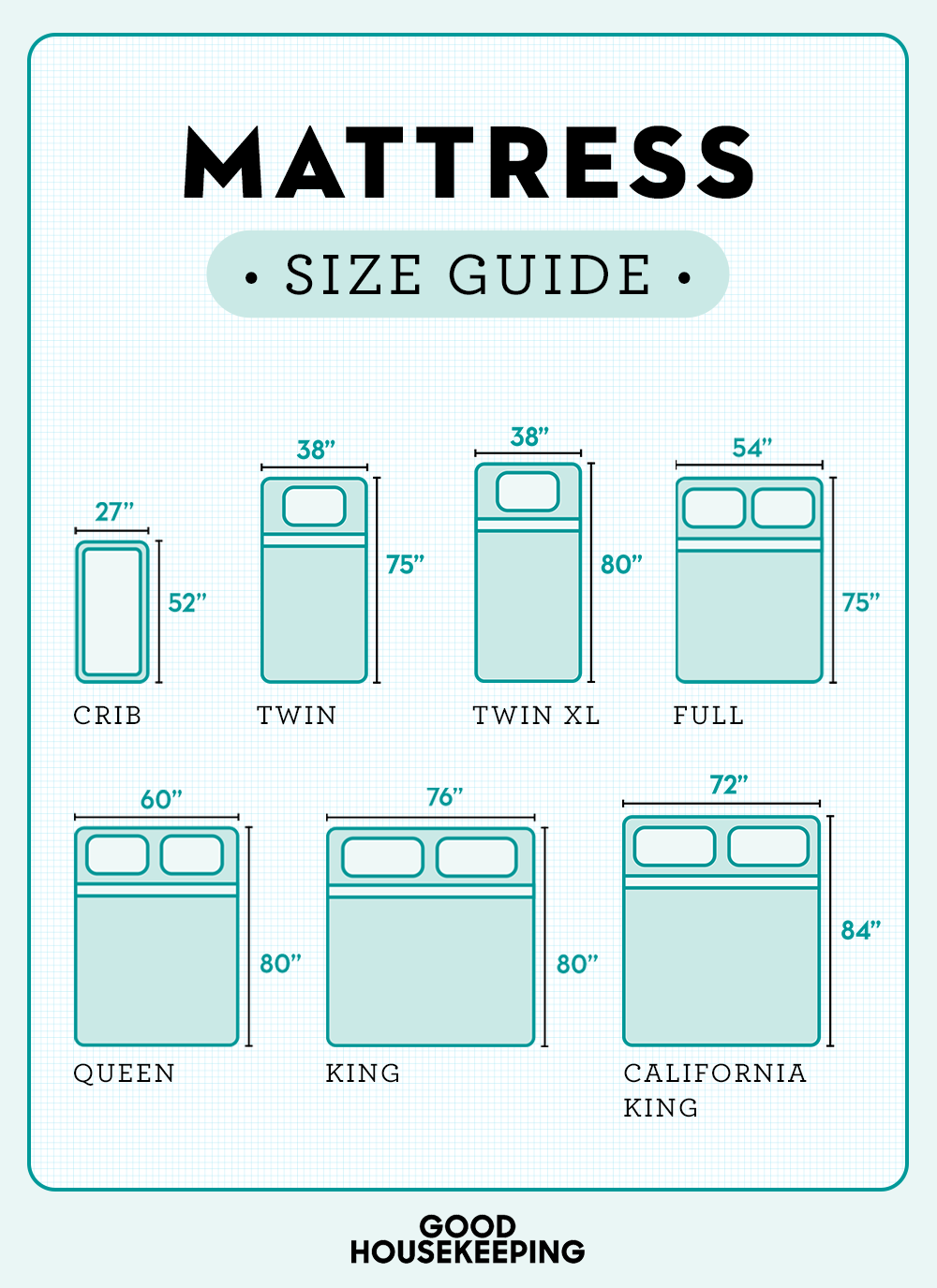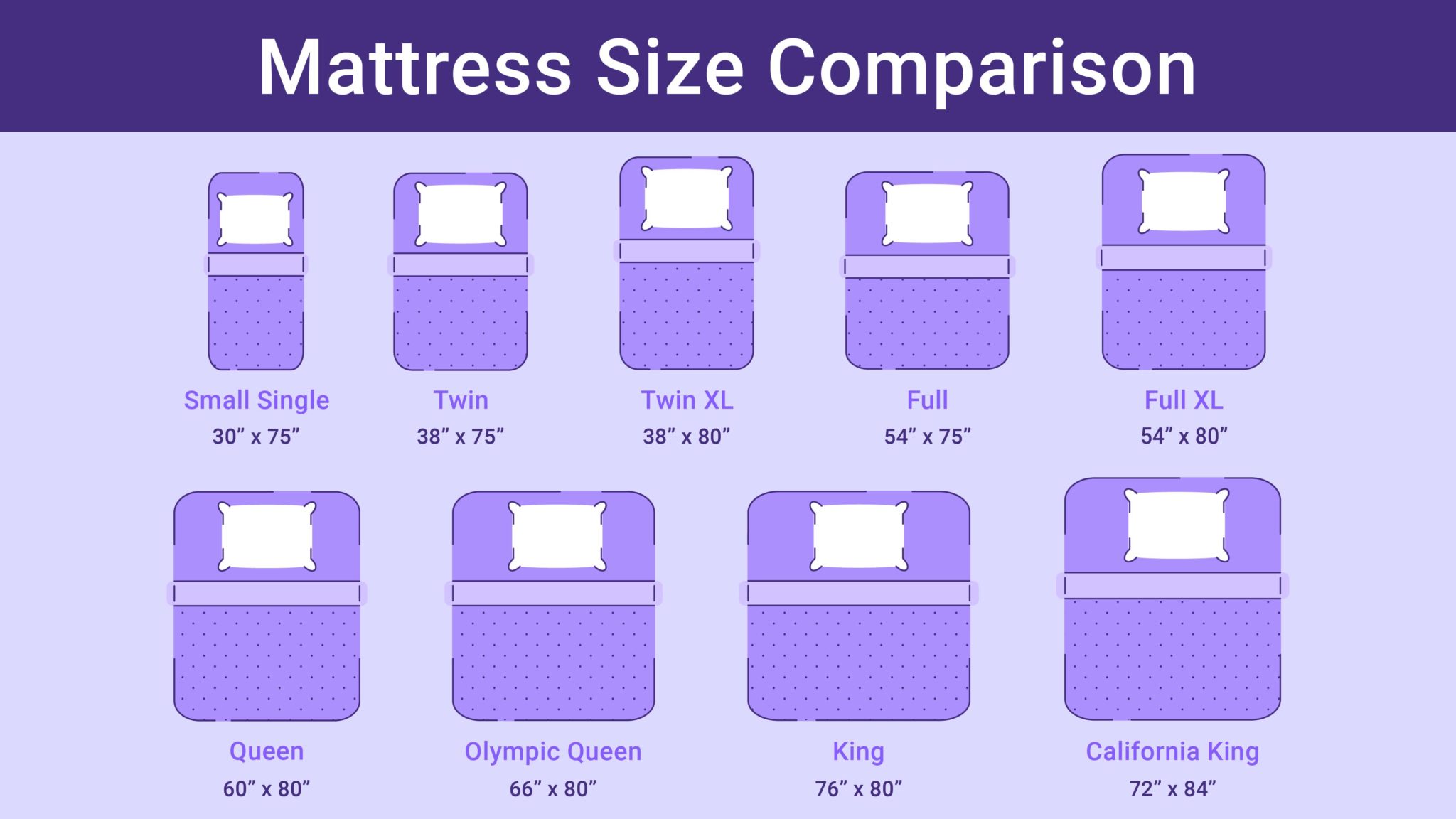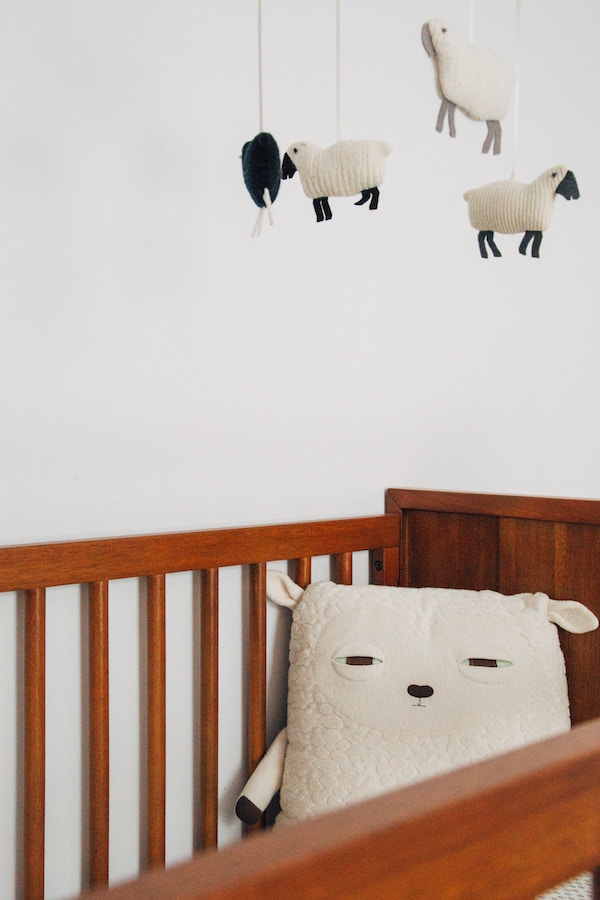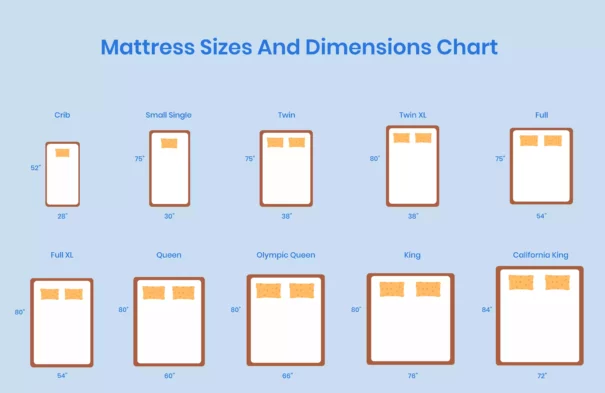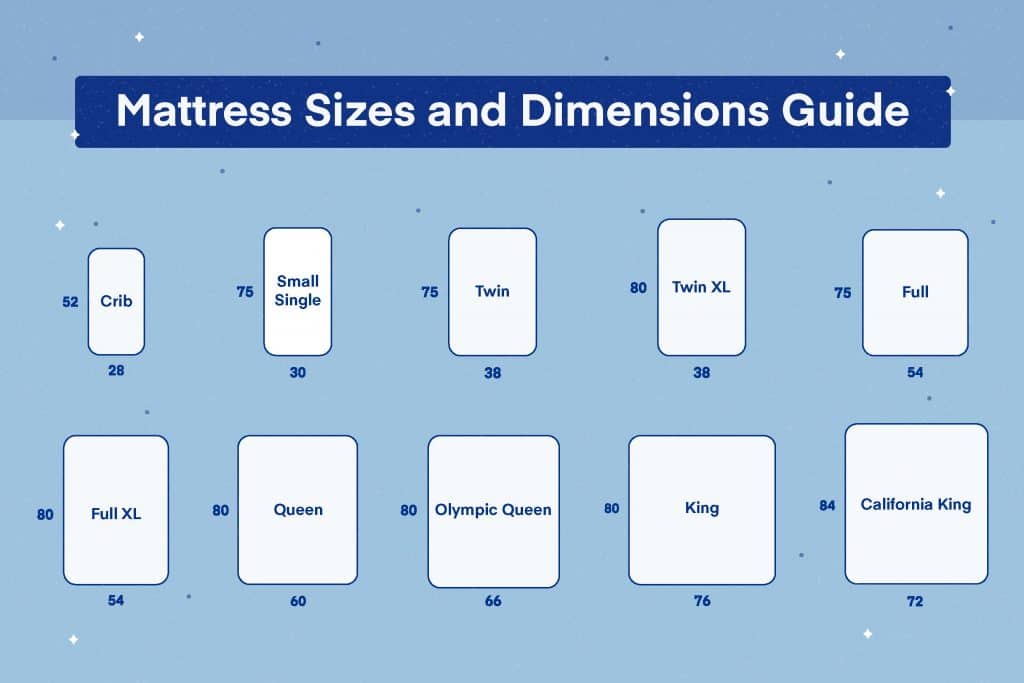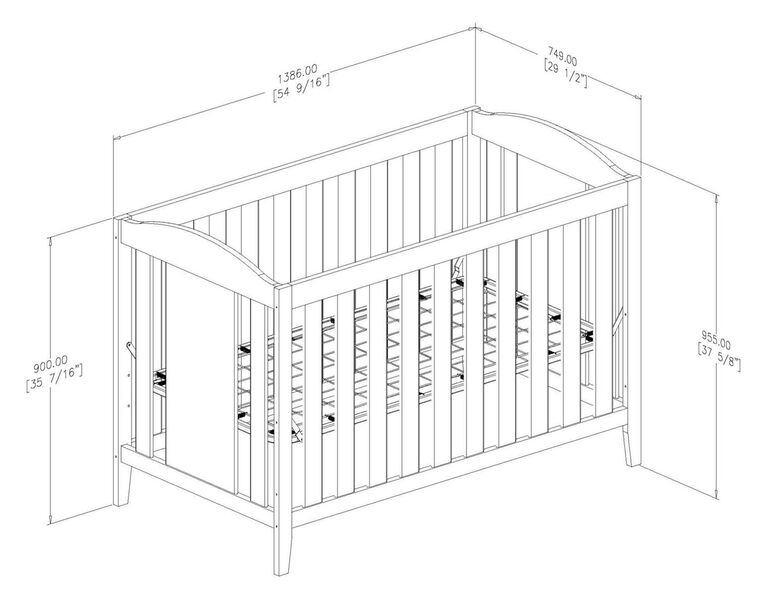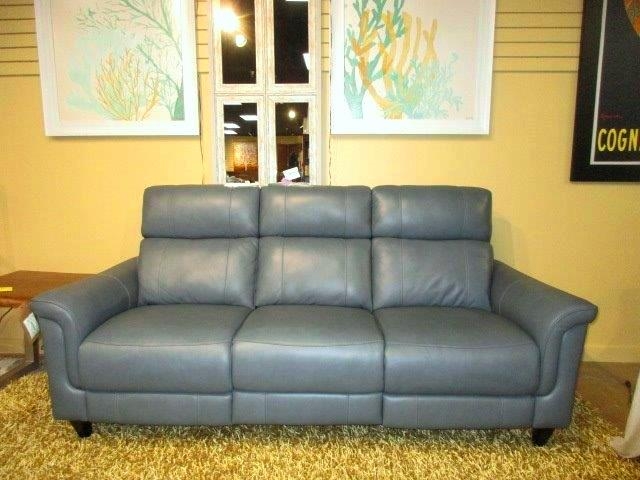Choosing the right mattress for your baby's crib is an important decision for any parent. With so many options available, it can be overwhelming to determine which size and type of mattress is best for your little one. One of the most common questions parents have is about the dimensions of a standard crib mattress. The standard crib mattress dimensions are 28 inches by 52 inches, with a thickness of 6 inches. This size is designed to fit most standard cribs and provides a safe and snug sleeping space for your baby. It is important to note that while the dimensions are standard, the thickness of crib mattresses may vary. A standard crib mattress is typically made of firm and non-toxic materials to ensure the safety and comfort of your baby. It is also important to regularly check the fit of the mattress in the crib to ensure there are no gaps or spaces that could pose a risk to your baby.Standard Crib Mattress Dimensions
Once your child outgrows their crib, the next step is usually to move them into a bigger bed. One common option is a twin size bed, which has a mattress size of 39 inches by 75 inches. This is a popular choice for children's bedrooms as it provides enough space for them to grow and can also accommodate a range of bed frames and headboards. Unlike crib mattresses, twin mattresses are available in a variety of thicknesses, with the most common being 8-12 inches. Thicker mattresses may offer more support and comfort, while thinner ones may be more suitable for bunk beds or trundle beds. It is important to consider the height and weight of your child when selecting the thickness of their twin mattress.Twin Mattress Dimensions
With the dimensions of both a standard crib mattress and a twin mattress in mind, it's clear that they are not interchangeable. A standard crib mattress is smaller and thinner than a twin mattress, making it unsuitable for use in a twin bed frame. On the other hand, a twin mattress would not fit securely in a crib and could pose a safety hazard for your baby. It's also worth noting that a standard crib mattress is designed specifically for infants and toddlers, while a twin mattress is more suitable for older children and adults. The firmness and size of a crib mattress provide the necessary support and safety for a growing baby, while a twin mattress can accommodate the changing needs of a child as they get older.Standard Crib vs Twin Mattress
While a standard crib and a twin bed may seem similar in size, they serve different purposes. A crib is designed for infants and young toddlers, providing a safe and snug space for them to sleep. A twin bed, on the other hand, is intended for older children and adults and offers more space and support for a comfortable night's sleep. Another key difference is that a crib typically has adjustable sides to keep a baby contained and safe, while a twin bed has a solid frame and headboard. As your child grows and becomes more active, a crib may no longer be a suitable sleeping space, and a twin bed may be a better option.Standard Crib vs Twin Bed
When it comes to size, a standard crib and a twin bed are not interchangeable. A standard crib is designed to fit a standard crib mattress, while a twin bed is meant to accommodate a twin mattress. While the lengths of both mattresses are the same, a crib mattress is narrower and thinner than a twin mattress, making it unsuitable for use in a twin bed frame. Additionally, a standard crib is usually lower to the ground than a twin bed, making it easier for parents to reach their baby and for the child to navigate in and out of bed. This lower height also reduces the risk of injury if a child were to fall out of bed.Standard Crib vs Twin Size
The size difference between a standard crib and a twin bed is evident, making it clear that these two are not interchangeable. A standard crib is significantly smaller than a twin bed, providing a safe and snug space for a growing baby. A twin bed, on the other hand, offers more space and support for older children and adults. It's also important to consider the size of the room when deciding between a crib and a twin bed. A standard crib takes up less space and is more suitable for a smaller room, while a twin bed may be a better choice for a larger bedroom.Standard Crib vs Twin Bed Size
While a standard crib and a twin mattress serve different purposes, the size difference between them is not as significant as one might think. A standard crib mattress and a twin mattress have the same length, but a crib mattress is narrower and thinner than a twin mattress. It's important to note that twin mattresses are also available in XL and XXL sizes, which are longer than a standard twin mattress. These sizes are often used for taller individuals or for those who prefer more legroom while sleeping. However, these sizes are not commonly used for children's beds.Standard Crib vs Twin Mattress Size
When it comes to dimensions, a standard crib and a twin bed are quite different. A standard crib is 28 inches by 52 inches, while a twin bed is 39 inches by 75 inches. This difference in size is essential to provide a safe and comfortable sleeping space for a growing baby versus a developing child or adult. It's also worth noting that the height of a standard crib is usually lower than a twin bed, making it easier for parents to reach their child and for the child to climb in and out of bed. This lower height also reduces the risk of injury if a child were to fall out of bed.Standard Crib vs Twin Bed Dimensions
When it comes to measurements, a standard crib and a twin mattress are not interchangeable. A standard crib is designed to fit a standard crib mattress, while a twin bed is meant for a twin mattress. While the lengths of both mattresses are the same, a crib mattress is narrower and thinner than a twin mattress, making it unsuitable for use in a twin bed frame. It's also important to consider the thickness of a mattress when comparing measurements. A standard crib mattress is usually 6 inches thick, while a twin mattress can range from 8-12 inches. This difference in thickness can affect the comfort and support provided by the mattress, so it's essential to consider the needs of your child when selecting a mattress.Standard Crib vs Twin Mattress Measurements
The measurements of a standard crib and a twin bed are quite different, making it clear that these two are not interchangeable. A standard crib is 28 inches by 52 inches, while a twin bed is 39 inches by 75 inches. This difference in size is essential to provide a safe and comfortable sleeping space for a growing baby versus a developing child or adult. It's also important to consider the height of the bed when comparing measurements. A standard crib is usually lower than a twin bed, making it easier for parents to reach their child and for the child to climb in and out of bed. This lower height also reduces the risk of injury if a child were to fall out of bed.Standard Crib vs Twin Bed Measurements
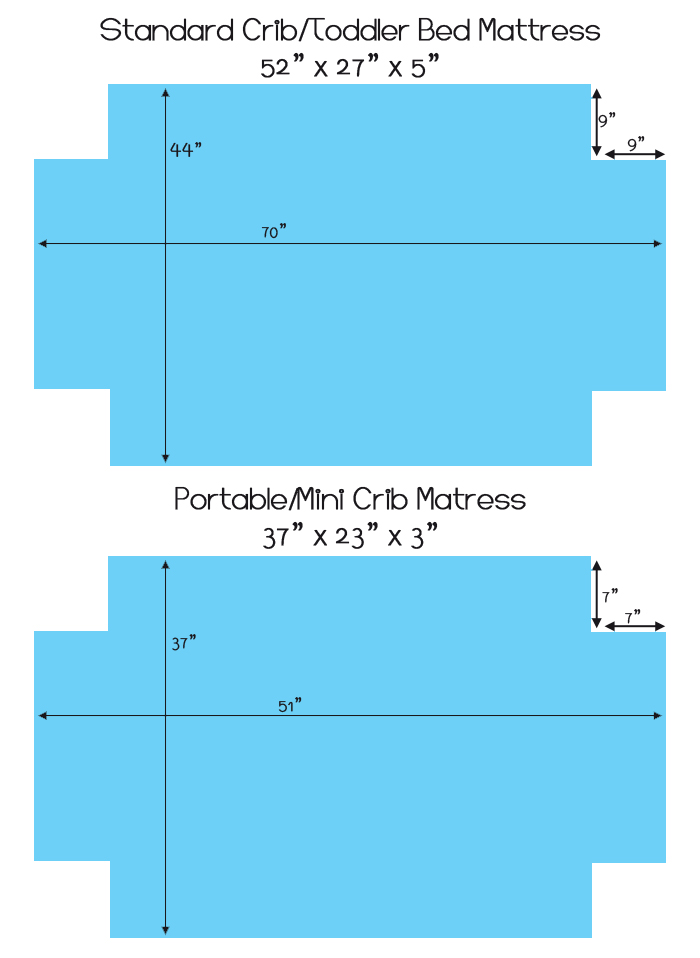
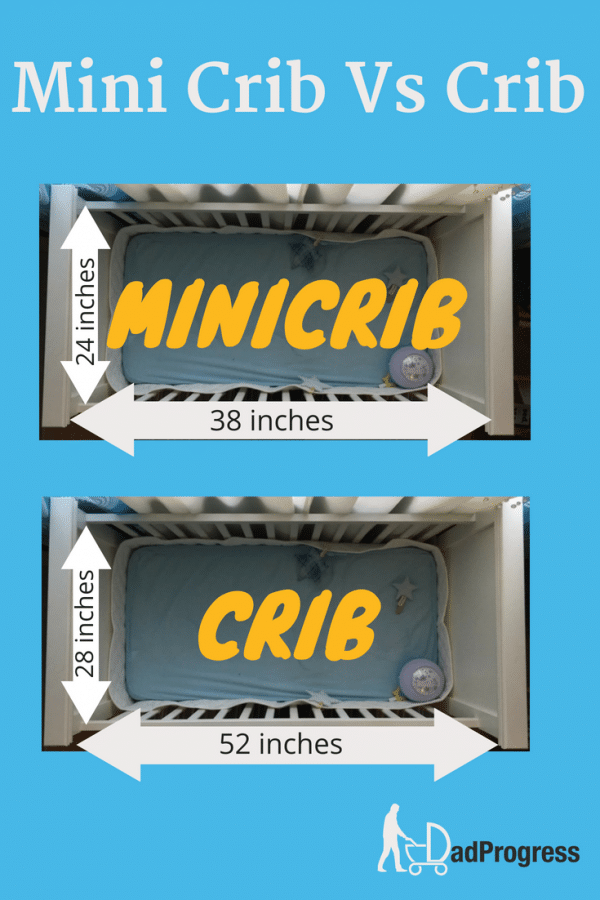


:max_bytes(150000):strip_icc()/284559-article-a-guide-to-the-standard-crib-mattress-size-5ac50d3ac5542e0037d552d1.png)

